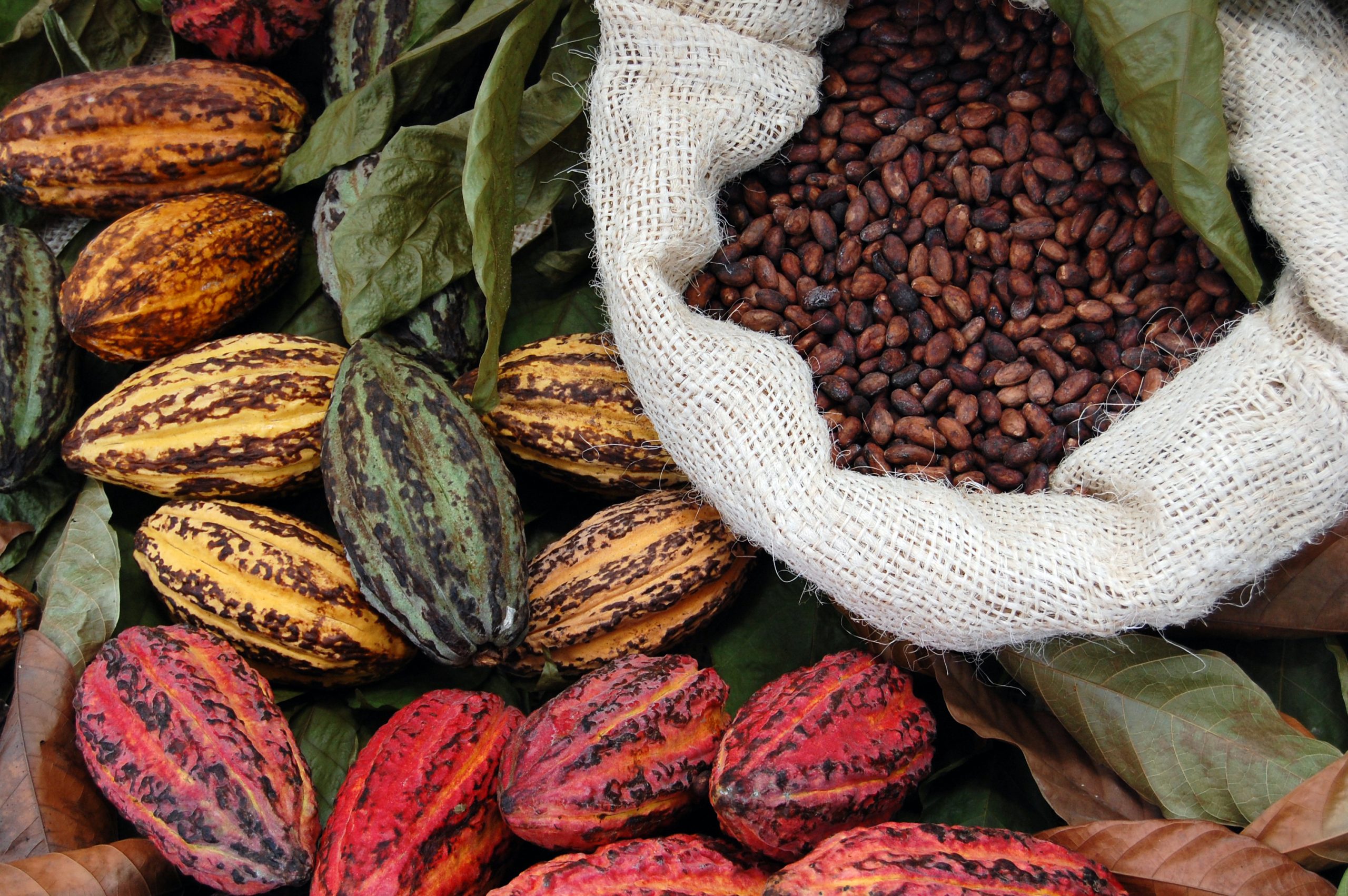Chocolate and the humble cocoa bean are the mainstays of some of the world’s most delicious confectionery, but they are also linked to deforestation in some production regions. Leading chocolate companies and cocoa buyers have come together to tackle the issue by working with other stakeholders in Asunafo-Asutifi landscape in Ghana.
Since 2019, under the umbrella of the World Cocoa Foundation (WCF), Cargill, Ecom, Lindt, Mars, Mondelēz International, olam food ingredients, Sucden and Touton have worked with the Ghana Cocoa Board, known as COCOBOD, civil society organizations and facilitator Proforest to reach a common vision for the landscape.
Some of the companies involved in Asunafo-Asutifi already had their own projects there, aiming to reduce deforestation, increase cocoa productivity and improve community livelihoods. All recognized they needed to collaborate and take action at a broader scale if their efforts were to be successful and long-lasting (read a case study on the companies’ collective action here).
“Beyond the support for farming communities, there are other off-farm activities that require collective efforts. Having the nod to develop the landscape, it was good to bring others on board and work together to support the sustainability of the landscape,” says Jephthah Oduro Mensah, Cocoa Life Ghana Operations Lead at Mondelēz International.
Asunafo-Asutifi is a major cocoa-producing area in Ghana, itself the world’s second-largest producer, accounting for 18% of global output.[1] Ghana’s cocoa has been linked to deforestation, but the government is determined to stop this.[2] In 2015 it established a countrywide jurisdictional approach called the Ghana Cocoa Forest REDD+ Programme, and prioritized six cocoa-producing areas, including Asunafo-Asutifi, for landscape-scale action.
The first step for the eight companies was to jointly fund a baseline socio-economic and ecological study of the 383,000 ha landscape. This study provided critical input for the development of management and investment plans, which were developed by the WCF, Proforest, Ghana’s Forestry Commission, COCOBOD and non-profit SNV. The plans set out objectives and helped the private sector identify areas with the greatest opportunity and need for its support.
Implementation will begin this year, 2023, but companies are already seeing the benefits of collaboration and joint action. “Working collectively in a landscape provides opportunity for companies to work at scale at a lower cost per head,” says Kennedy Ntoso, Sustainability Manager at olam food ingredients.
Another benefit is knowledge sharing, which is a goal of Cargill. “Although we are not directly sourcing from Asunafo-Asutifi, we contribute towards the strategic and dialogue meetings. We found it necessary to participate in this to take lessons to inform how we implement activities in other landscapes,” adds Samuel Apana, Sustainability Country Lead at Cargill in Ghana.
The private sector has prioritized four areas for investment: restoring forests; agroforestry (including replacing old or diseased trees) using climate-smart cocoa production systems; enhancing the livelihoods of communities and farmers; and supporting improved governance and creating awareness of sustainable forest management.
Smallholders remain a major part of the plan to intensify production and reduce pressure on forests. That’s because more than 90% of Ghana’s cocoa beans are produced by farmers with low levels of productivity. Many have old, less-productive trees, declining soil fertility, pests and diseases, and low incomes.[3] Improving their productivity and income can reduce the pressure on forests. Some companies were already working on smallholder initiatives, and successful programmes will be scaled up.
Companies highlight some of the elements underpinning the successes to date, including progressive government policies, particularly the Ghana Cocoa Forest REDD+ Programme; companies’ own sustainability commitments at the international level, including the Cocoa & Forests Initiative; WCF’s leadership of the private sector in Asunafo-Asutifi and the presence of an effective and neutral facilitator, Proforest.
They also outline lessons learnt so far, including how to collaborate well with other stakeholders to build healthy relationships, how to reach alignment on a common vision through constructive discussions and how to take action at landscape scale. (Find out more about why and how global companies take landscape-scale action in cocoa production areas here.)
And with implementation of the Asunafo-Asutifi landscape management plans beginning soon, companies emphasize that communities and farmers must be the prime beneficiaries. Without these local actors, it will be next to impossible to implement climate-smart and sustainable landscape interventions.
[1] ICCO (International Cocoa Organization), 2020. ICCO Quarterly Bulletin of Cocoa Statistics, XLVI (1), cocoa year 2019–20.
[2] Acheampong, E.O., C.J. Macgregor, S. Sloan and J. Sayer, 2019. ‘Deforestation is driven by agricultural expansion in Ghana’s forest reserves’, Scientific African, 5, e00146; Forestry Commission, 2017. ‘Ghana’s national forest reference level’. https://redd.unfccc.int/files/ghana_ national_reference__level_01.01_2017
[3] Somerville-Large N. and A. Capillo, 2020. Cocoa Sustainable Livelihoods Landscape Study: Côte d’Ivoire and Ghana. Fairtrade Foundation Research. www.fairtrade.org.uk/wp-content/uploads/2020/06/ Cocoa-Sustainable-Livelihoods-Landscape-Study.pdf
